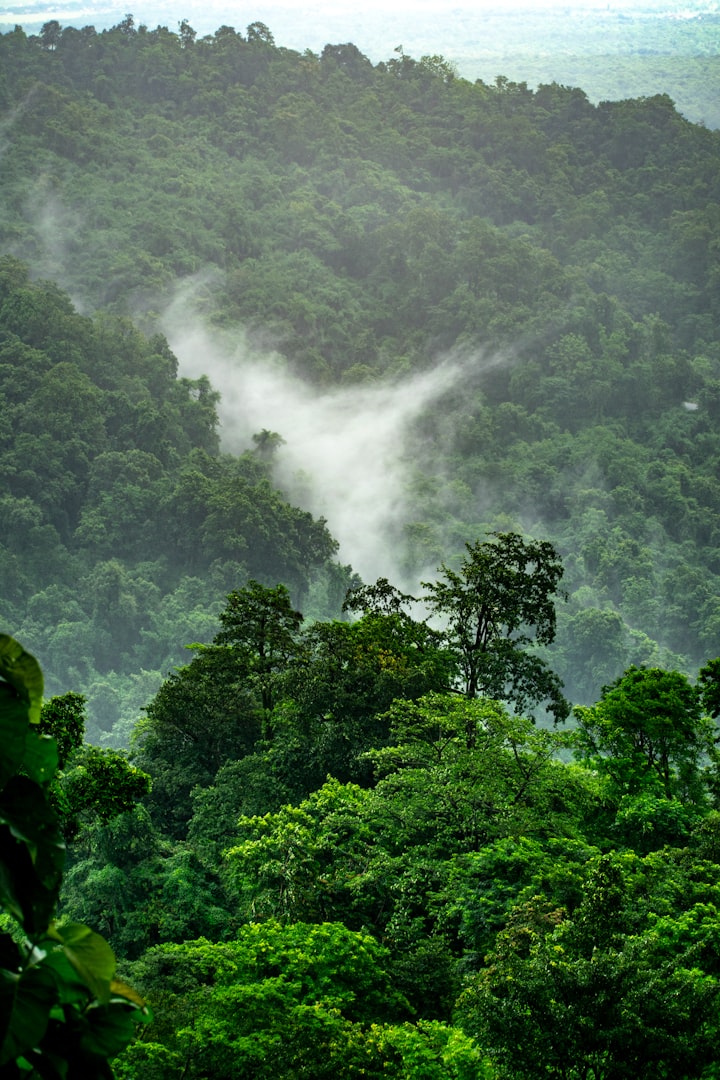The Rainforest's Neatest Endangered Monkeys
How to Save Them

There are many adorable monkeys and apes in the rainforest. Unfortunately, many of these are endangered. Every year, the rainforest dwindles a little more. Unfortunately, as the rainforest disappears, so do the animals that live there, causing many of these animals to become extinct every day. When something happens to a member in the food chain, all the things on both ends of it are affected, including the plants and trees, not just the animals in the rainforest. Here are some of the top culprits for the shrinking of the rainforest:
- Pollution
- Introduction of exotic species
- Excessive hunting and fishing
- Development of new human communities close to the rainforest
- Excessive and illegal logging
- Poorly timed or placed fires (beneficial in its normal cycle)
So what animals are going extinct in the rainforest? Many tapirs, cats, birds, and as listed below, many primates.

Sumatran Orangutans: Critically Endangered
Sumatran orangutans are the most endangered of all the ape species. There are only 6,500 left in the wild. Today, most of them live in forests outside of protected parks and reserves.
The Sumatran orangutan is native to the north end of Sumatra. They are tree dwellers, so much so that the females never walk on the ground, which makes them the largest tree-living mammal on earth. Every day, each orangutan builds a nest in a tree to sleep. Since they are taught by their mothers how to make a nest, each community makes it a little different. One group actually will line their nests with leaves that repel insects. They prefer to live in mountainous regions, but stay below 3,300 feet elevation.
Orangutans are solitary mammals that require large amounts of land, although females will occasionally socialize with neighboring females. Females require 6 square miles of land, while males require a much larger territory. Unfortunately, the more land they need, the more limited a species is to where they can live. Therefore, the less amount of rain-forest that is available, the fewer orangutans that can live in the wild.

Chimpanzees - Endangered
Chimpanzees live as a community in African rainforests, grasslands, and woodlands. As many as four or five dozens may live together at one time. They usually sleep in trees where they build nests of leaves and spend most of their waking time swinging from tree to tree and eating fruits, plants, insects, and sometimes eggs or meat. Although they are mostly tree-dwellers, they walk efficiently both upright and on all fours where they do knuckle-walking.
Chimpanzees, along with many of the other ape species, use tools in their everyday life. Chimpanzees will smash nuts with stones and use sticks to reach insects. They are also able to learn some basic human sign language.
They generally grow about 4 to 5.5 feet tall, weighing 70 to 130 pounds. They can live up to 45 years in the wild. Although, much like most of the rain-forest creatures, their greatest enemy is the destruction of their habitat.

Gorillas: Increasing
Gorillas are yet another endangered animal found in the rain-forest. They are also known as the great ape due to their massive size and massive strength. They can bench press 4600 pounds! They usually are dark in color with black fur that covers everywhere except their face, hands, and rear.
The gorilla has many of the same threats as other primates, although unlike many of the others, the great ape's decline began two hundred years ago when hunters began using guns to shoot. The hunters sought out the gorilla due to its large size, which would feed many people. Unfortunately, there are still many who hunt the gorilla for meat today. Now they only live along the border between Cameroon and Nigeria. Only 200 to 300 live in the wild today.

Golden Lion Tamarins: On the Rise
Lion Samaritan monkeys get their name due to the mane around their heads because it is similar to that of the African wildcat. There are four species of lion tamarins, golden lion tamarins being the most critically endangered. They can live as long as fifteen years in the wild and only weigh 14 to 29 ounces, with its body 7.5 to 8.75 inches long. The tail is longer at 10.25 to 13.5 inches.
Tamarins live primarily in trees, where they will carry their young on their back, as they swing from tree to tree. They live in social groups so that both the male and the female take on primary caregiving roles with the young. Usually, a pregnant tamarin will give birth to twins.
They reside naturally along the Atlantic coast in Brazil, where the rainforest is lush. Due to the delogging of the rainforest in that area, their natural resources are being diminished and limiting where they can live. As a result, the golden lion tamarin monkey's population is dwindling.

Spider Monkey: Vulnerable
Spider monkeys live in both Central and South America, where they form a group of up to three dozen animals. Although while they are sleeping, they make smaller groups of six or fewer monkeys. They can live up to twenty-two years in the wild. They are only 13 pounds and range from 14-26 inches tall without their tails.
They live most of their lives up in the treetops, where they will forage for food in small groups. They most often eat fruits, nuts, trees, bird eggs, and spiders. They have long lanky arms and legs without thumbs, which makes them very agile. Since they are social creatures, they have many noises that they use to communicate with one another. Most are very loud like screeching or barking, although they have many other sounds as well.
Like all other rainforest creatures, they are harmed by deforestation, although they have another threat. The indigenous people often hunt spider monkeys for food. These two things, in combination, have caused their numbers to dwindle.

Ring-Tailed Lemurs: Only Found in Southern Madagascar
Ring-tailed lemurs are native to the Island of Madagascar and noted for the long, beautifully striped, black, and whitetail. Despite their long tail, they are unable to use their tails like many other primates. Fortunately, they are very agile with their hands and feet, which makes them excellent climbers.
Ring-tailed lemurs are social creatures, living in groups of half a dozen to thirty lemurs in one troop. They communicate with one another through a unique odor. The males will try to dominate one another by outstinking one each other. They will cover their long tails with this smelly secretion, then wave their tails to determine which male lemur is the most powerful. Despite this display of dominance amongst the males, a dominant female guides a troop.
Like their primate cousins, they are primarily endangered because the sparse, dry forest where they live is becoming limited.

Bonobo: Endangered
Bonobos and chimpanzees are so similar they were not considered a separate species until 1929. Due to their close similarity, bonobos are sometimes called pygmy chimpanzees because they are smaller and thinner than chimps, plus they are slightly darker. Both species share 98.7% of their DNA with us, making them humans' closest relatives. Bonobos are more peaceful than chimpanzee groups and are led by the females in the group. Although if they meet another bonobo group, they will engage in heated fighting.
They mainly live in the Democratic Republic of Congo in a forest south of the Congo River. Unfortunately, due to civil unrest in the area, scientists have not been able to study them very well, although there is bonobo poaching that occurs since their body parts are used in medicine because it is believed to give sexual vigor, as well as for sport due to their meat. Since they are more peaceable, many will try to take them as pets as well.
How Can You Save the Rainforest?
Many beautiful animals call the rain-forest home; these primates are just a few. We need to make sure that we are doing everything in our power to preserve the forests by using as little of the resources as we can. The resources we must use, we need to analyze whether we can recycle, reduce, or reuse these. Although you may not be able to save the rainforest directly, you can save the ecosystem in your area by:
- Planting trees in otherwise barren areas.
- Support companies that are eco-friendly by using their products.
- Educate others on how to help the environment.
- Reduce your wood consumption.
- Reduce your oil consumption.
- Hold businesses accountable that are wasteful.
Sources
"Endangered Species Conservation." WWF. Accessed April 09, 2012. http://worldwildlife.org/.
"Mammals – Science Articles." Wild Mammals Science Articles Index - Current Results. Accessed April 09, 2012. http://www.currentresults.com/Wildlife/Mammals/index.php.
"National Geographic." Animals. Accessed April 09, 2018. http://animals.nationalgeographic.com/.
Woodhouse, Graeme. TerraNature | Terra Nature Fund - Saving New Zealand Biodiversity. Accessed April 09, 2012. http://www.terranature.org/index.htm.







Comments
There are no comments for this story
Be the first to respond and start the conversation.